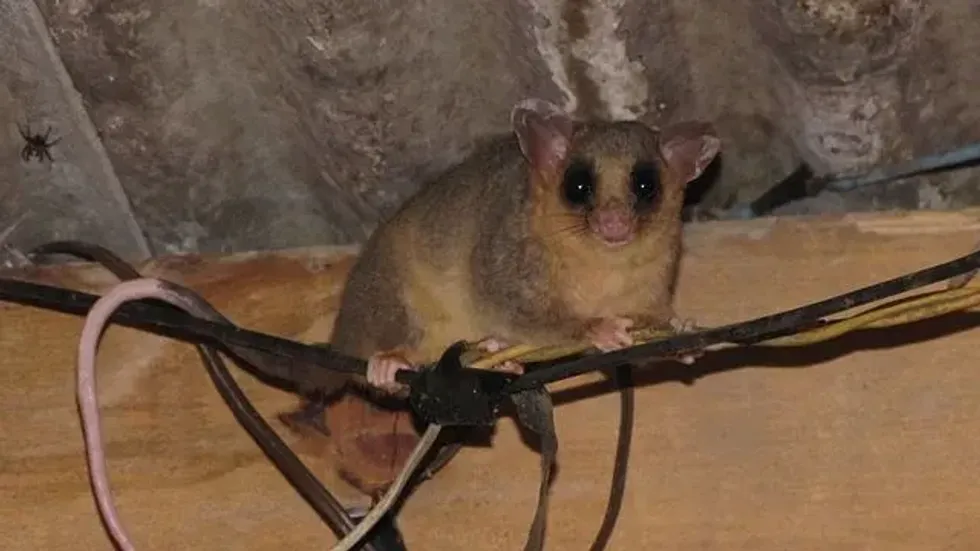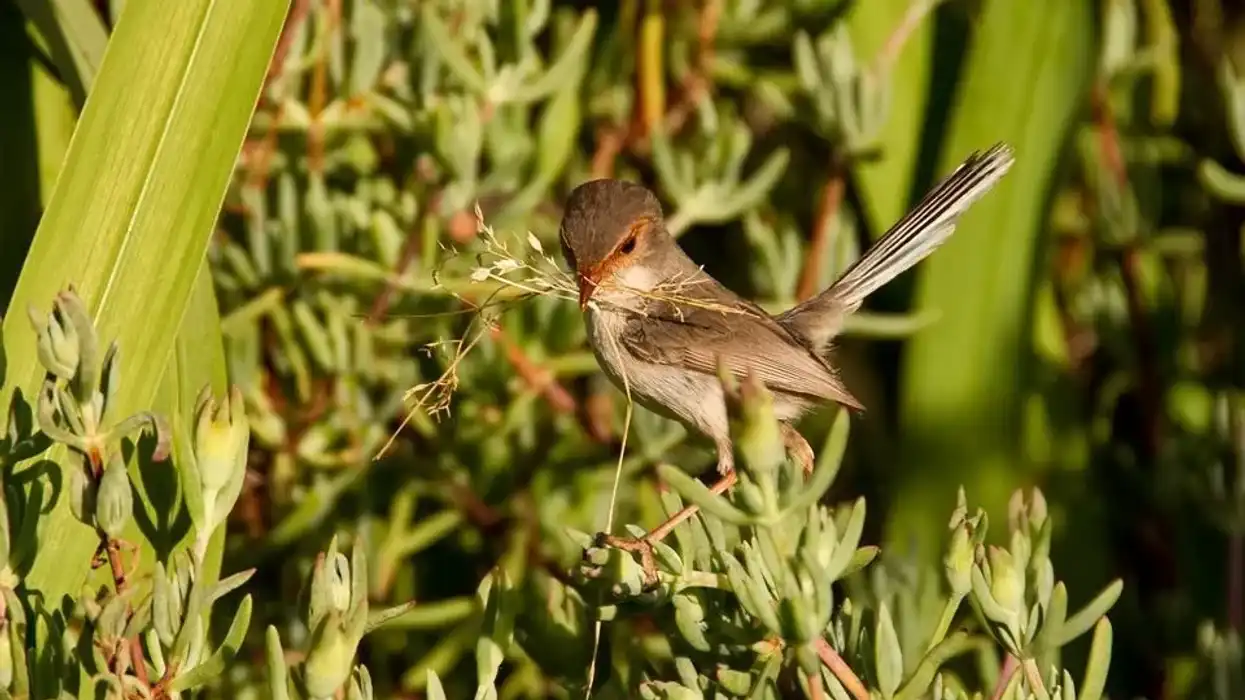The true woolly opossums are New World arboreal marsupials native to the Central and South Americas. These neotropical animals belong to the genus Caluromys and include three species, the Central American woolly opossum or Derby's woolly opossum (Caluromys derbianus), the western woolly opossum or brown eared woolly opossum (Caluromys lanatus), and the bare tailed woolly opossum (Caluromys philander).
While the Derby's or Central American woolly opossums are found in the moist evergreen and deciduous forests of Central America, the western eared woolly opossums are from South America.
The bare-tailed woolly opossums also reside in the South American rainforests.
Members of all the three true woolly opossum species have big, almost naked ears, a long, prehensile tail for grabbing objects, and either black markings on the back or a stripe along the middle of the face.
All woolly opossum species are covered in fur up to the tip of the tail, except the bare tailed opossums, which have relatively less furred tails.
The three species of true woolly opossums are nocturnal mammals that mostly feed on fruits, flowers, birds, birds' eggs, insects, and other small vertebrates and invertebrates.
All species of the genus Caluromys are of Least Concern in the International Union for Conservation of Nature (IUCN) Red List of Threatened Species.
Read on for more brown-eared, bare-tailed, and Central American woolly opossum facts! If you like what you read, do check interesting articles on the paca and numbat.
Woolly Opossum Interesting Facts
What type of animal is a woolly opossum?
The woolly opossum is a neotropical arboreal marsupial in the genus Caluromys. It has three recognized species, all new world marsupials, nocturnal, and tree-dwelling.
What class of animal does a woolly opossum belong to?
The woolly opossum belongs to the class of mammals.
How many woolly opossums are there in the world?
An estimate of the population size of woolly opossums is not available. However, the Least Concern status of the animals in the International Union for Conservation of Nature (IUCN) Red List of Threatened Species indicates that their numbers are in abundance.
Where does a woolly opossum live?
All three species of woolly opossums are native to Central and South America. The Central American woolly opossum (Caluromys derbianus) habitat range includes Honduras, Veracruz in southeastern Mexico, Belize, eastern Guatemala, Costa Rica, Panama, Nicaragua, Ecuador, and Colombia.
The bare-tailed woolly opossum (Caluromys philander) also has quite an extensive range extending from the Andes mountains in Venezuela, east, along the South American coast, up to north-central Brazil, and further south up to the 28 degrees south latitude.
Lastly, the western woolly opossums' (Caluromys lanatus) habitat range includes Colombia, eastern Ecuador, southern and northwestern Venezuela, northern Bolivia, eastern Peru, northern Argentina, eastern Paraguay, French Guiana, and western Brazil.
What is a woolly opossum's habitat?
The Central American woolly opossum (Caluromys derbianus) inhabits evergreen rainforests, tropical humid and dry forests, plantations, and gardens. The arboreal animals can be found at up to 8,200 ft (2,500 m) above sea level.
Likewise, the western woolly opossum (Caluromys lanatus) can be found in lowland humid forests, gallery forests, plantations, and even gardens. It mostly prefers moist locales at altitudes of 656-4,265 ft (200-1,300 m).
The bare-tailed woolly opossum (Caluromys philander) does not have clear habitat preferences but is common in evergreen tropical rainforests with an abundance of dense canopies. The species exist at elevations of up to 5,905 ft (1,800 m). All species are tree-dwelling.
Who do woolly opossums live with?
The Central American woolly opossums, western woolly opossums, and bare-tailed woolly opossums are all solitary animals, except during courtship and mating. These mammals are nocturnal, and their night activities usually include foraging trips within home ranges.
How long does a woolly opossum live?
The average lifespan of the neotropical, tree-dwelling woolly opossum in the genus Caluromys is approximately six years.
How do they reproduce?
The Central American woolly opossum breeding occurs round the year, with the females undergoing an estrous cycle of 16-39 days. The average gestation period lasts about 21 days.
At the end of the gestation period, the female opossum gives birth to about two to six young. The average litter size for the species is three. Like other marsupials, female opossums have a pouch in which they carry around their newborn young after birth.
The bare-tailed woolly opossums can produce up to three litters per year, with breeding activities reaching a peak at times of abundant resource availability. The gestation period of the bare-tailed woolly opossum lasts for around 24 days, and the female can give birth to a litter of one to seven young in a single pregnancy.
In addition, the newborn young spend about 120 more days in their mother's pouch. In the wild, the average litter size of the bare-tailed woolly opossum species is around four.
The western woolly opossums' breeding time spans throughout the year. The species have a relatively small litter size of about one to four young. A female can produce up to three litters per year and undergoes an estrous phase for 20-31 days.
All species of female opossums are known to take good care of their newborn young, nursing them, grooming them, and protecting them from potential predators. All newborns are underdeveloped and are kept in their mother's pouch for at least 120 days, during which the development process is completed.
Taking care of the young is the singular responsibility of the female, and there has been no report of the males engaging in the care of the young.
What is their conservation status?
As per the International Union for Conservation of Nature (IUCN) Red List of Threatened Species, all three species of the arboreal woolly opossum are of Least Concern.
Woolly Opossum Fun Facts
What do woolly opossums look like?
The Central American woolly opossum is a medium-sized mammal with a long prehensile tail. The backside of the body is covered in woolly, thick, soft, lightly frosted reddish-brown fur, and the front part is yellowish-white.
The area between the shoulder and the hips has a pale gray patch. The ears are pinkish or white and naked.
In addition, a dark brown stripe starts from the pale gray head and runs down up to the middle of the face. The tail is half furred, and the females have a well-developed pouch when carrying their young.
Except for a few differences, the bare-tailed woolly opossums also have a more or less similar appearance as the Central American woolly opossum.
For instance, the tail of the bare-tailed woolly opossum is bare for the most part, with a clear demarcation between the furred and naked portions. Moreover, three dark stripes run down from the gray-colored head, one from the crown to the nose, and the other two extend from the dark eye rings up to the nose.
The bare part of the tail of the bare-tailed woolly opossum can range from cream to darker colors and is marked with spots.
The western woolly opossums' overall physical features are very much like the other two species but with some subtle differences. The body of the western woolly opossum is covered with long, dense, and woolly fur, reddish or brownish on the back and yellowish-white on the front.
The face is gray, with a dark stripe running down the center. The eyes have dark rings, and the brownish ears are large and naked. The tail does not bear any pigmented spots.

How cute are they?
The small to medium-sized body and furry coats of the woolly opossum species do make them look cute and adorable. Untrained eyes could easily confuse these animals with the bushy-tailed weasels!
How do they communicate?
In general, woolly opossums of the genus Caluromys are quiet animals moving silently through tree branches. The usual woolly opossum sounds include hissing when threatened and clicking during mating.
Given the night foraging behavior of the woolly opossum, they are thought to have good senses of hearing, vision, smell, and touch. The bare-tailed woolly opossum usually gives out a distressed scream, and the Central American woolly opossum squeals when faced with danger or potential predators.
How big is a woolly opossum?
The body length of the Central American woolly opossum ranges between 8.8-11.8 in (22.3-30 cm). The bare-tailed woolly opossum is slightly larger with a body length in the range of 16-27 in (41-68.6 cm).
The body length of the western woolly opossum can range between 7.9-12.6 in (20-32 cm). All three species have more than twice the body length of a honey possum.
How fast can a woolly opossum run?
Woolly opossums are known to achieve top speeds of 4 mph (6 kph) while running.
How much does a woolly opossum weigh?
The Central American woolly opossum weighs about 8.6-13 oz (244-368 g), while the bare-tailed woolly opossum has a bodyweight in the range of 5-14 oz (142-397 g). The western woolly opossum can weigh between 10-14.4 oz (283-408 g).
What are the male and female names of the species?
A male opossum is called a jack, and its female counterpart is called a jill.
What would you call a baby woolly opossum?
Woolly opossum babies and young are called joeys.
What do they eat?
The woolly opossums are omnivorous mammals with a diet comprising mainly of fruits, flower nectar, sap, gum, reptiles, insects, birds, and other small vertebrates and invertebrates. Fruit comprises a major part of the diet of all three species.
Are they dangerous?
Woolly opossums are not known to be dangerous, except that they are a crop pest that invades fruit plantations.
Would they make a good pet?
While the woolly opossums may come across as cuddly creatures, they are wild animals that may not fare well in a domestic environment.
Did you know...
The woolly mouse opossum (Marmosa demerarae) is a marsupial in the same family as the woolly opossum. It, too has a fruit, insect, and small animal-based diet.
What are the different types of woolly opossum?
The three types of true woolly opossums in the genus Caluromys include the Central American woolly opossum, the western woolly opossum, and the bare-tailed woolly opossum. The other two woolly opossums are the bushy-tailed opossum (Glironia venusta) and the black-shouldered opossum (Caluromysiops irrupta).
What is the difference between a possum and an opossum?
Both possums and opossums are marsupials. However, while the opossum is native to the Americas, the possum is from Australia. The two animals differ significantly in terms of physical appearance as well. The two most common possum species are the common ringtail possum and common brushtail possum.
Here at Kidadl, we have carefully created lots of interesting family-friendly animal facts for everyone to discover! Learn more about some other mammals including nutria facts and Virginia opossum facts pages.
You can even occupy yourself at home by coloring in one of our free printable Arizona mammal coloring pages.









